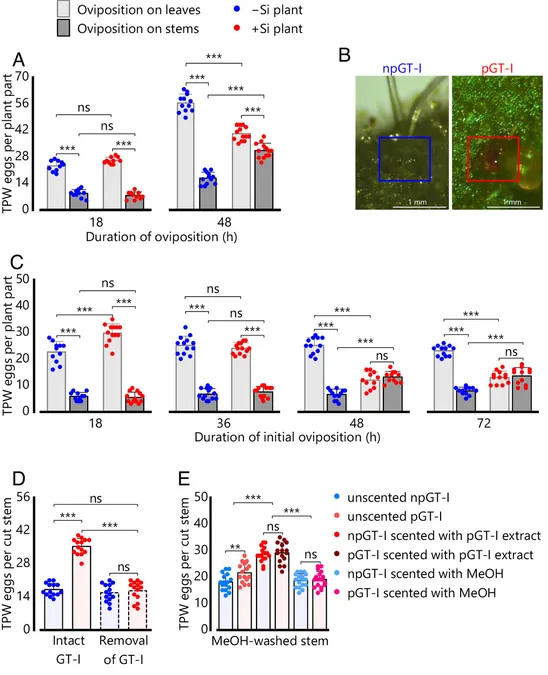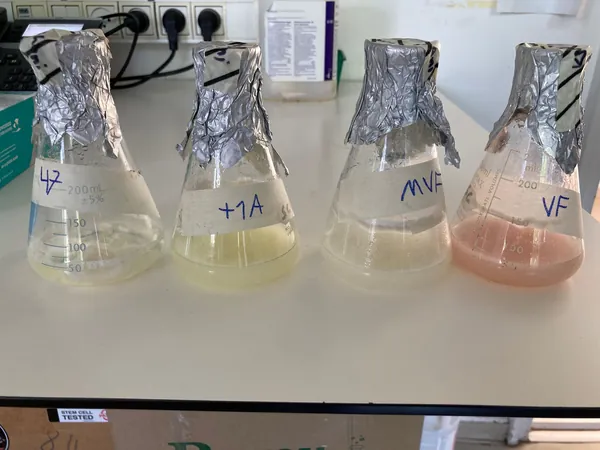
NASA's Future in Space Science at Risk: Cost-Effective Strategies and the Need for Mission Competition
2025-03-26
Author: Sarah
Introduction
As NASA grapples with an uncertain financial landscape, crucial factors such as reduced launch costs, increased risk tolerance for robotic missions, and significant technological advancements could prove vital for the sustainability of its space science program. According to Robert "Bobby" Braun, director of the space exploration sector at the Johns Hopkins University Applied Physics Lab (APL), maintaining a robust schedule of competitively selected missions in the Discovery and New Frontiers series is essential for the health of planetary science.
Budget Cuts and Urgency
With speculation surrounding President Trump’s FY2026 budget request potentially targeting NASA’s science program for significant cuts, urgency surrounds the conversation. Braun addressed the Space Transportation Association on Capitol Hill, presenting innovative methods to cut costs in space missions amidst looming budget threats.
Rise of Micro-satellites
One of the most promising strategies involves the rise of micro-satellites and small rockets capable of launching multiple payloads simultaneously. For instance, APL recently celebrated the launch of its Electrojet Zeeman Imaging Explorer (EZIE) mission, which utilized SpaceX’s Falcon 9 to send three cubesats into orbit, costing around $1–2 million. This represents a growing trend of cost-efficient space missions.
Cost Reduction in Flagship Missions
Even larger, flagship missions have witnessed significant budget reductions, primarily due to shifting launch vehicles. The Europa Clipper, tasked with studying Jupiter's moon Europa, initially faced a staggering estimated cost of $2 billion when it was tethered to NASA's Space Launch System (SLS) rocket. Congress eventually opted for a more affordable option, allowing Clipper to launch on a SpaceX Falcon Heavy for about $178 million, ultimately extending its journey to Jupiter but highlighting how adaptability in mission planning can yield substantial savings.
Accepting Risks in Robotic Missions
However, with robotic missions, an inherent willingness to accept greater risk may be necessary. Unlike human spaceflight, where the stakes are personal safety, the failure of a robotic mission poses only a budgetary concern. Braun remarked, “If we’re not taking risks in our robotic missions, then when are we taking risks?” APL regularly balances technical risks against potential cost and scheduling implications, asserting that reducing technical risk often results in increased expenses and extended timelines.
Technological Advancements
Technological advancements play a pivotal role as well. The Parker Solar Probe, which is currently orbiting the Sun closer than any previous spacecraft, faced decades of prohibitive costs due to the unique challenges of protecting its instruments from intense heat. Thanks to innovations in heat shield technology derived from the Department of Defense's hypersonics program, this mission launched successfully, showcasing APL’s commitment to overcoming engineering challenges while remaining within budget and on schedule.
Recognition of Achievements
The team behind the Parker Solar Probe was recognized with the prestigious Collier Trophy for 2024, a notable acknowledgment of their achievements. Alongside Parker, APL has been indispensable in several key NASA missions, including the Double Asteroid Redirection Test (DART), which tested planetary defense by crashing into an asteroid moon, and New Horizons, which famously conducted a flyby of Pluto.
Looking Ahead: The Dragonfly Mission
Looking ahead, APL's Dragonfly mission, a dual-quadcopter set to explore the rich surface of Saturn's largest moon, Titan, is on track for its Critical Design Review next month, aiming for a 2028 launch—if funding allows.
Growing Pressure on NASA's Science Program
The pressures on NASA's science program are mounting, exacerbated by budget cuts in FY2024, and the challenges of ongoing funding resolutions continue to impede the planning and selection of new missions. Braun emphasized that delays in competitive mission opportunities are concerning not just for APL, but for all partners involved in NASA's broader ecosystem. “It’s not just about APL; it affects JPL, Goddard, and all our industry and university partners. Competition fosters innovation and drives discovery.”
Conclusion
As NASA navigates this turbulent financial terrain, the future of its space science initiatives rests heavily on these strategic adjustments and the support of sufficient funding. The dialogue around risk, cost, and technology will undoubtedly shape the direction of humanity's exploration into the final frontier. Stay tuned for how these dynamics will unfold in the coming years!




 Brasil (PT)
Brasil (PT)
 Canada (EN)
Canada (EN)
 Chile (ES)
Chile (ES)
 Česko (CS)
Česko (CS)
 대한민국 (KO)
대한민국 (KO)
 España (ES)
España (ES)
 France (FR)
France (FR)
 Hong Kong (EN)
Hong Kong (EN)
 Italia (IT)
Italia (IT)
 日本 (JA)
日本 (JA)
 Magyarország (HU)
Magyarország (HU)
 Norge (NO)
Norge (NO)
 Polska (PL)
Polska (PL)
 Schweiz (DE)
Schweiz (DE)
 Singapore (EN)
Singapore (EN)
 Sverige (SV)
Sverige (SV)
 Suomi (FI)
Suomi (FI)
 Türkiye (TR)
Türkiye (TR)
 الإمارات العربية المتحدة (AR)
الإمارات العربية المتحدة (AR)